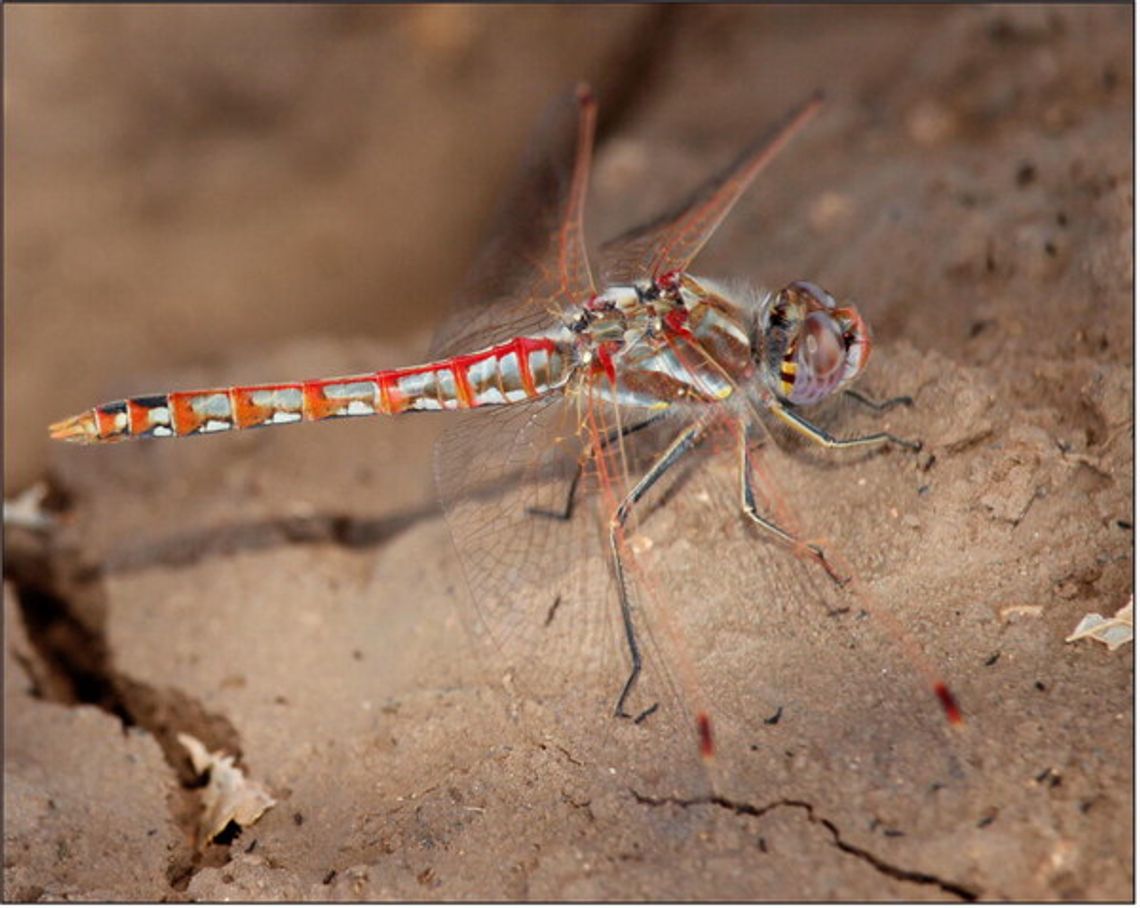Most of the time, when someone sees a dragonfly, it is an indicator of standing water somewhere in the near vicinity. It has been said that Native Americans would utilize dragonflies as “guides” to assist them in finding water sources during travels. However, there is one species of dragonfly here in Texas that would not be wise to follow if looking for water, and that is the beautiful desert dwelling Variegated Meadowhawk.
The Variegated Meadowhawk (Sympetrum corruptum) is a medium-sized dragonfly that can achieve body lengths of 1½ inches and a wingspan of just under 2 inches. Like other insects, it has three body parts: the head, the thorax (what the wings and legs are attached to), and the abdomen. Like many other species of dragonflies, this species is sexually dimorphic in appearance, meaning males and females can be differentiated from each other by coloration and/or overall build. There are a few characteristics that both sexes possess; both have an overall gray background with a complex pattern of pastel hues, the anterior wings in both have veins that are bright orange, and both have legs that are black with yellow striping. Mature males have a red face and a chainlike pattern of red and gray on the abdomen. This red deepens as the animal matures. Juvenile males and adult females have a tan face, and the chainlike pattern is more pastel orange in coloration.
When perched this species will hold their wings open horizontally at a slight downward angle. This is one of the many ways to differentiate “true” dragonflies and damselflies as the latter will sit with their wings held together, upright, and closed over the abdomen.
Variegated Meadowhawks can be observed throughout the western two-thirds of the US, including all but the very eastern portions of Texas (basically east of I-45). Outside of our nation’s borders it can be seen southward to southern Mexico and there is even a population in Siberia. It is in these areas that it can be observed near still waters (such as cattle tanks) and slow-moving streams and creeks. It seemingly prefers to reside in areas of almost open barrenness, and it is the species of dragonfly most likely to the encountered in open desert areas far from any visible water sources, making it a common sight throughout the Trans-Pecos and Llano Estacado eco-regions.
All dragonflies are predatory insects feeding primarily on flies, mosquitoes, and other small flying insects. Variegated Meadowhawks may eat up to 10% of their body weight in a day, which equates to it eating literally hundreds of smaller insects daily. It hunts from a perching position, “dashing” through the air to obtain its prey like a living combat aircraft. It will not perch in one spot too long, instead moving frequently to better its chances of feeding. It can be quite aggressive in obtaining its perch, in fact, it is one of the few species that will fight other dragonflies above open water. The more aggressive individuals are the ones who have a higher success rate of survival.
Variegated Meadowhawks, like other dragonflies, are a key indicator on the health of an ecosystem. As habitats decrease, so do the populations of dragonflies. And with the sheer number of insects that just one individual can consume in a day, it is apparent the importance that these flighted creatures play in our environment.





















